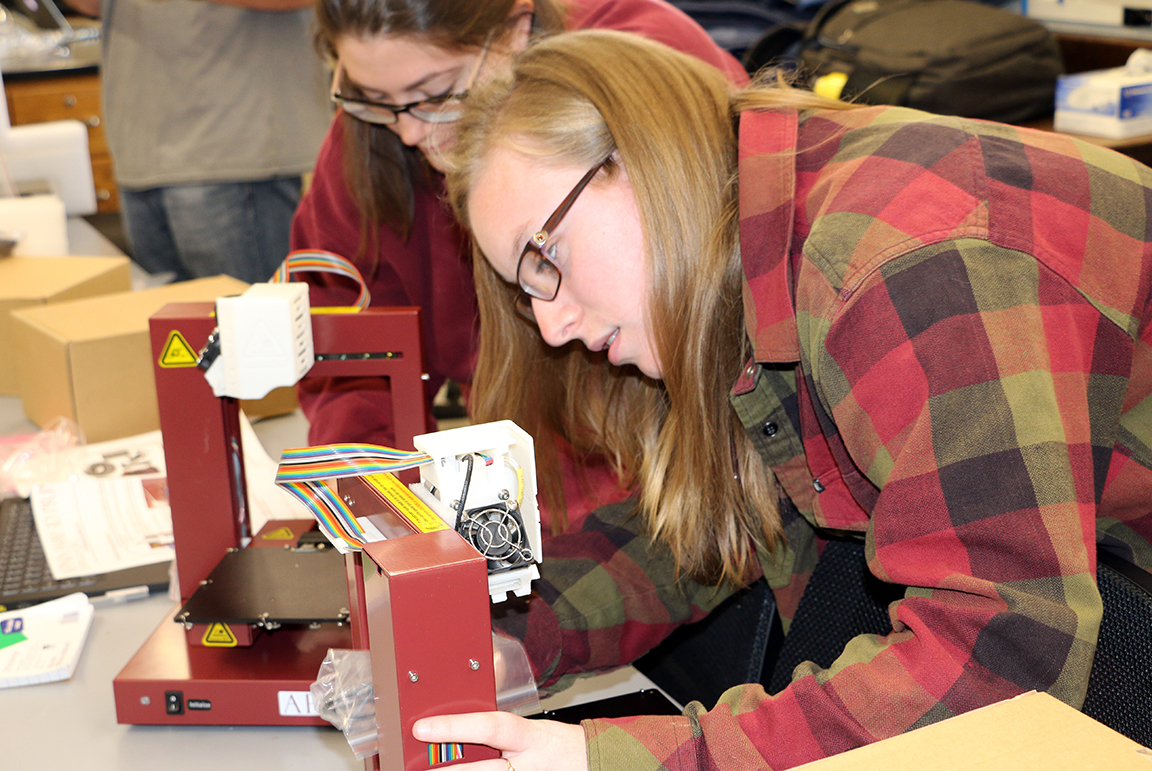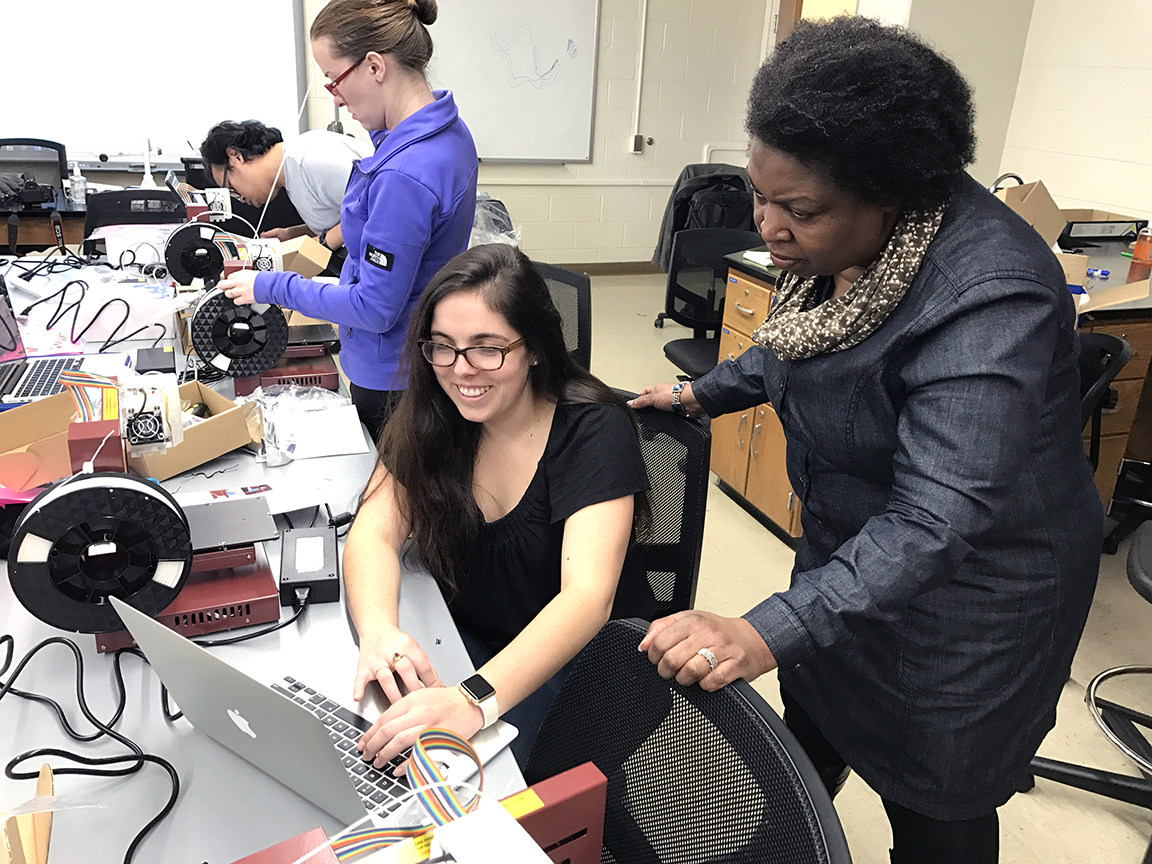3-D Printers for Classrooms
March 13, 2017

On February 20, the last of a group of 56 in-service and pre-service teachers received a 3-D printer as part of a three-year, $449,421 National Science Foundation Research Experience for Teachers grant.
The grant was headed by Christopher Williams, an associate professor of mechanical engineering in the Virginia Tech College of Engineering, and Brenda Brand, an associate professor of science education in the Virginia Tech College of Liberal Arts and Human Sciences.
The final cohort was made up of pre-service students who are attending the master’s of education program at Virginia Tech after earning a degree from the College of Science. After graduation in May 2017, they will take positions primarily with middle and high schools, armed with research-based science training and now a 3-D printer, which will help them develop engaging curriculum for their students.
“The idea behind our original grant proposal was to be able to bring in-service teachers and pre-service teachers together and provide them with an academic research experience, and to also show them what is made possible through advanced manufacturing,” said Williams, who directs the Design, Research, and Education of Additive Manufacturing Systems Lab. “Many students think of manufacturing in late 19th and early 20th century terms, but modern manufacturing offers far more high-tech opportunities and possibilities, and we wanted to give them a glimpse of that by providing 3-D printers for their classrooms. In addition, 3-D printers in classrooms provide broader benefits for STEM curriculum development; teachers can use them as context for teaching fundamental math and science concepts, and can use them to fabricate parts for in-class design challenges.”
Pre-service students are provided the printers as part of a workshop. The workshop orients them to 3-D printing and strategies for developing instruction that engages students in developing solutions to open-ended problems using the engineering design process, integrated with technologies, such as 3-D printing.
“This final group is the first group made up entirely of pre-service teachers,” Brand said. “The in-service teachers who have participated have shared stories of developing new curriculum integrating the 3D printers. Some of them have gone on to present at workshops and conferences.”

The printers expose students not only to manufacturing but also allow teachers the opportunity to integrate an introduction to engineering design into their curriculums.
“The recently released Next Generation Science Standards emphasizes the integration of engineering design in science instruction,” Brand said. “Engineering design requires students to apply what they’re learning, and our goal is to prepare more students for STEM careers, as well as acquaint them with the potential opportunities for manufacturing.”
Williams and Brand agreed that the best testament to the success of their program are the teachers who write back with the results of what they’ve been doing and to say that their teaching has changed tremendously.
Written by Rosaire Bushey





